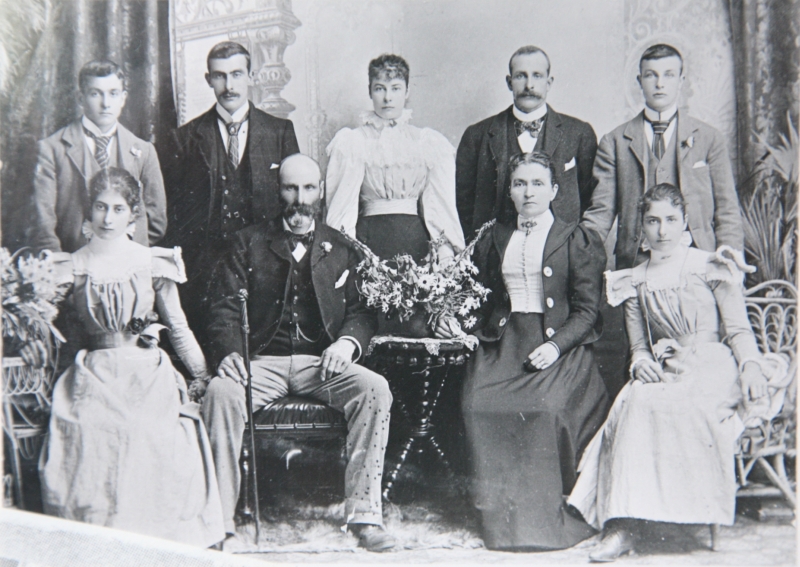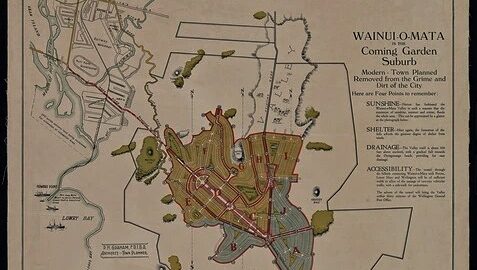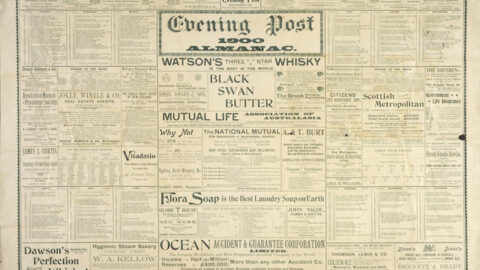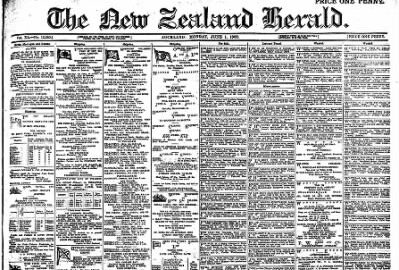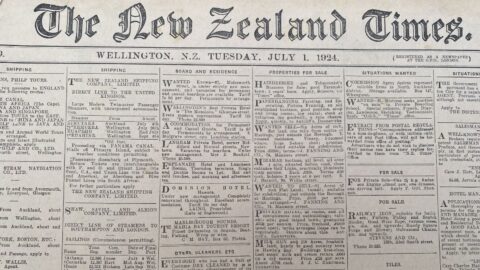Duncan Sinclair and family c1899 – Wainuiomata Historical Museum Collection – P1141
Back Left to Right: Harold (1880-1938), Duncan Jnr (1874-1927), Agnes (1877-1955), Hugh (1872-1947), Norman (1880-1963);
Front Left toRight: Edith (1879-1941), Duncan Snr (1846-1920), Martha nee Mowlem (1842-1935), Alice (1879-1935).
The Sinclair Family, among the earliest settlers in Wainuiomata, established a logging operation in Homedale.
Hugh Sinclair
Hugh Sinclair (1810-1871), a notable figure among Wainuiomata’s early settlers, arrived from Sydney alongside his employer, J. D. Crawford, F.C.S., a New South Wales squatter. They embarked on the “Success” along with ten other passengers, reaching Cook Strait on November 14th, 1839, before proceeding to Kapiti to arrange goods transport for trade with some Maori.
After departing the ship, they journeyed on foot to Port Nicholson, arriving around January 22nd, 1840, coinciding with the arrival of the immigrant ship “Aurora.” Crawford later returned to New South Wales in 1846, leaving Hugh in Wellington. There, he purchased land in Lowry Bay in 1844, following encouragement from a friend, Dr. Taylor. Hugh managed Mrs. Jackson’s estate after James Jackson’s passing in 1846 until her return to England around 1859.
By the late 1850s or early 1860s, Hugh acquired significant land in Wainuiomata, establishing a sawmill between the Wainuiomata River and Moores Valley Stream which is known today as the Wainuiomata Stream. The sawmill was one of the first in the North Island and, at the time, the largest.
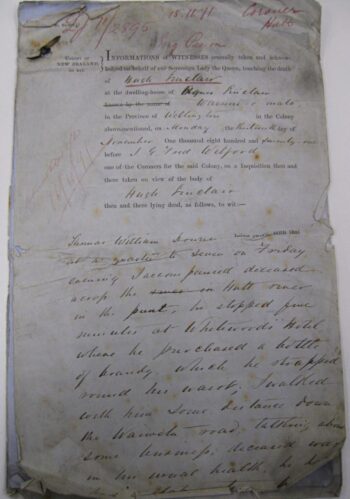 The family lived in “Northbrook“, the family’s residence, where most of the children were born. In 1871, Hugh Sinclair died and was buried in the Sinclair Cemetery near what is now, Hine Road Recreation Area. Later in 1878, Hugh’s wife passed away and was buried there. In the years that followed, three other family members were also laid to rest at the site, along with two others, including Richard Prouse IV.
The family lived in “Northbrook“, the family’s residence, where most of the children were born. In 1871, Hugh Sinclair died and was buried in the Sinclair Cemetery near what is now, Hine Road Recreation Area. Later in 1878, Hugh’s wife passed away and was buried there. In the years that followed, three other family members were also laid to rest at the site, along with two others, including Richard Prouse IV.
Read the Hugh Sinclair Coroners Inquest.
John and Duncan Sinclair
As Hugh Sinclair’s sons, John and Duncan, matured, they took over their father’s milling operations, managing the Wainuiomata Steam Saw Mill from 1872. They expanded logging into Skerretts Gully and Reservoir Valley, which was then known as Sinclair Valley, further developing the region’s timber industry..
In the 1870s, they modernised the sawmilling process by introducing an iron railway track and a locomotive to improve the transportation of timber. This innovation greatly enhanced efficiency, allowing logs to be moved more quickly from the dense forests of Wainuiomata to the mills and beyond.
Their efforts helped shape the timber industry in the Wellington region, supplying much-needed resources for the city’s expansion and construction during the late 19th century.
John Sinclair was born in 1844. He married Isabella Jackson Wood, and they had a daughter, Kate, born in 1869. After Isabella’s passing in 1875, John remarried Louisa Henrietta Coendoz Hill, with whom he had several children, including Isabel (born 1878), John Hugh (1880–1880), Jeanne (born 1881), and Tom Douglas (born 1882). Later in life, John relocated to Stratford and eventually to Tauranga around 1915. He remained active in various ventures until his passing on June 6, 1925.
Duncan Sinclair passed away on December 13, 1920, in Tauranga. Born in 1846 at Lowry Bay, Wellington, throughout his life, Duncan was actively involved in various ventures, including contracting and sawmilling. Later, he served as the engineer for the Pohangina County Council for 12 years before resigning in 1918.
Departure of the Sinclair Family
In the late 1870s, following the passing of Mrs. Mowlem’s parents, the Sinclair family left Wainuiomata.
By 1880, the Wellington City Council’s pipeline project recommended acquiring Sinclair-owned land in the reservoir area to preserve the quality of the watershed. Around the same time, timber milling in Wainuiomata became increasingly unprofitable due to competition from regions with access to the Wairarapa railway line. As a result, the Sinclairs eventually declared bankruptcy, leaving Wainuiomata with £11,000 in liabilities, while their assets were valued at around £25,000.
In 1881, Norman Sinclair, Duncan’s son, moved to Lowry Bay. Some years later, Duncan John Sinclair and Captain Mowlem purchased Lowry Bay (or part of it) for £3,500, a transaction that included the Governor’s residence, formerly occupied by Sir William Jervois.
After four years, they resettled in Palmerston North, where Duncan Sinclair made significant contributions to local engineering projects and civic activities. In 1885, he settled in Terrace End and took on the role of engineer for the Pohangina County Council, overseeing projects such as the Marton Waterworks and the Apiti Bridge.
Duncan also served as a Palmerston North Borough Councillor, was a member of the Beautifying Society, and contributed to the Terrace End School Committee, alongside his active involvement in St. Paul’s Methodist Church.
Some information was sourced from a transcription taken from a copy of a handwritten document held in the Local Studies Biographies collection at Petone Library.

